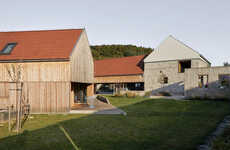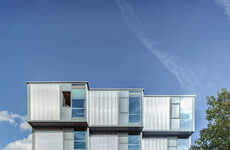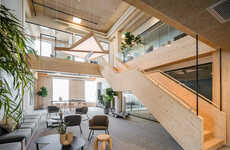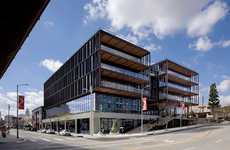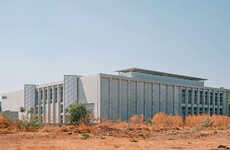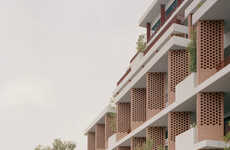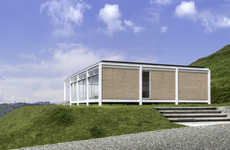
GutGut Architecture's Refurbishment Features Modern Materials
Joey Haar — May 17, 2018 — Art & Design
References: archdaily
Industrial buildings constructed throughout the middle of the 20th century were primarily made with durable materials like concrete and brick, but 'The Mill', an industrial refurbishment carried out by GutGut, is reshaping the industrial space to better suit its modern purposes. The new design features ample modern and natural materials, including glass and, most strikingly, wood.
The juxtaposition between wooden features and the concrete bones of The Mill is a bold choice for GutGut. Though the aesthetic might seem jarring, it's a clever way to make the space feel lighter and brighter than it would if the architects had opted to stick with the concrete that already typified the building. Since it will now be used for events, residences, and office space, that feeling is important.
Image Credit: BoysPlaceNice
The juxtaposition between wooden features and the concrete bones of The Mill is a bold choice for GutGut. Though the aesthetic might seem jarring, it's a clever way to make the space feel lighter and brighter than it would if the architects had opted to stick with the concrete that already typified the building. Since it will now be used for events, residences, and office space, that feeling is important.
Image Credit: BoysPlaceNice
Trend Themes
1. Wood-clad Industrial Buildings - Using modern and natural materials such as wood in industrial building construction for a fresher look and feel.
2. Mixing Modern and Historical Materials - Blending contrasting materials, such as wood and concrete, to repurpose and reuse older industrial spaces in a creative way.
3. Versatile Refurbishments - Transforming old industrial buildings into multipurpose spaces by repurposing modern, sustainable materials as part of the design.
Industry Implications
1. Construction Industry - The industry can explore using wood as an alternative material in industrial buildings to cater to the modern aesthetic preferences.
2. Architecture and Design Industry - The industry can create more innovative and sustainable designs by combining contrasting materials to refresh historical buildings for modern uses.
3. Real Estate Industry - The industry can adapt to current trends by investing in versatile refurbishments that cater to both commercial and residential needs.
2.9
Score
Popularity
Activity
Freshness

